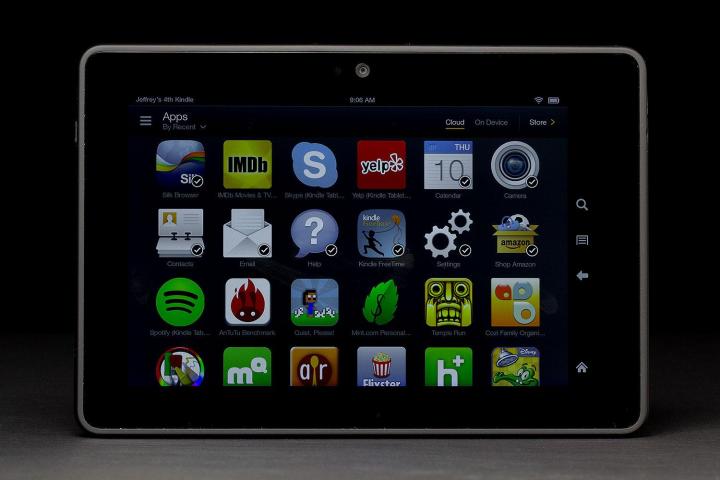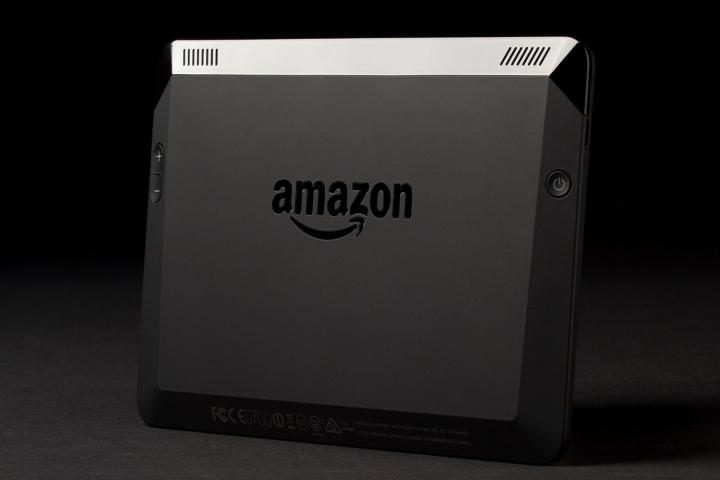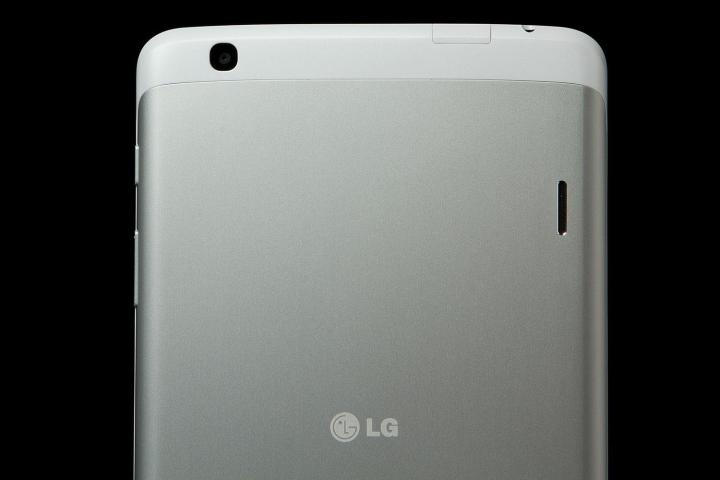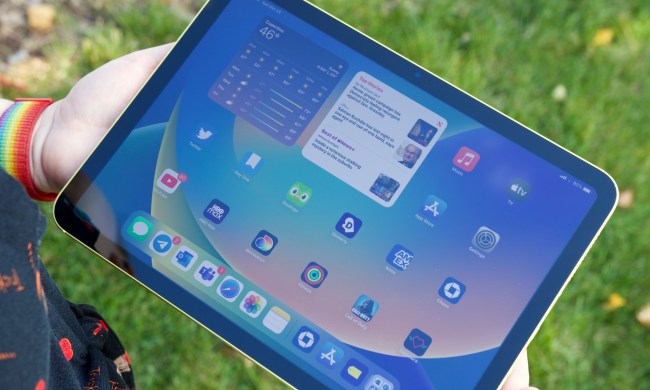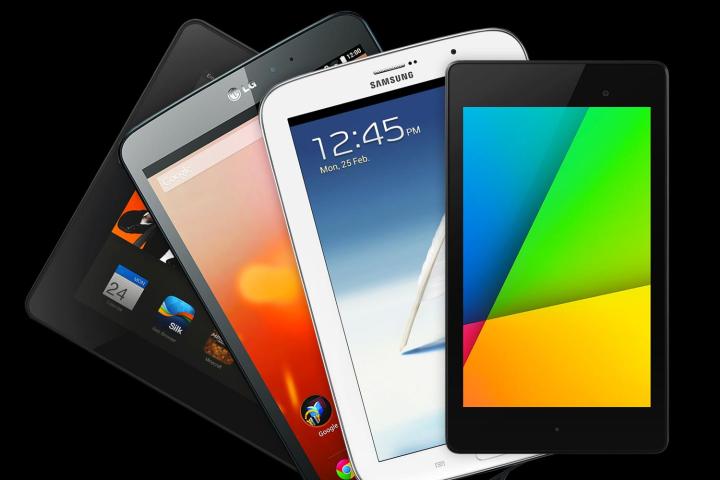
So you’ve opted against an iPad, and you want an Android tablet instead. That much, you’ve decided. But which one should you buy? There are a lot of options out there, and most of them are really crappy. In this article, we’re taking five of the best, and comparing them, feature by feature. All five of these tablets are a decent purchase, and all of them fall into the 7- or 8-inch screen category, which we think is the best size, and maximizes usability and portability. (The iPad Mini has an 8-inch display).
Processing Power
The first two versions of Amazon’s Kindle Fire were cheap to buy, but slow as molasses. Aside from not having access to many apps, the sluggishness of the Kindle Fire and Kindle Fire HD were our top problems with the two tablets. This year, Amazon dealt with the problem. The 7-inch Kindle Fire HDX is still cheap, but this year, it’s fast as hell. Running on a top-notch Qualcomm Snapdragon 800 chip (the same one in high-end phones like the LG G2 or Galaxy Note 3), the Kindle Fire HDX packs the most power of this bunch, followed closely by LG’s G Pad 8.3, which has a Snapdragon 600. The Kindle Fire’s biggest competitor, the Nexus 7, which is also priced at $230 this year, isn’t a slowpoke either, running on last-year’s high-end processor, the Snapdragon S4 Pro.
Numbers aside, we were impressed by how much snappier the Kindle Fire is this year, and think it takes the crown, especially considering its low price. The Note 8.0 may be the weakest contender in the bunch here, mostly because it came out way back in March 2013, but we wouldn’t discount any of these devices on processing power alone.
Winner: Kindle Fire
Pixel Power
The race to out-pixel the iPad has bled into the low-end Android market, and we’re all benefitting. Aside from the Note 8.0, all of these tablets have 1920 x 1200 pixel, Full HD screens. However, The Note 8.0 is the only device that has a screen built with stylus-friendly Wacom technology, which allows for far more responsive and precise drawing. However, you’re definitely going to see some pixels on that precise screen, which won’t happen on the G Pad, Fire HDX, or Nexus 7 unless you squint.
Winner: Tie
Hold and Feel
When it comes to comfort, these tablets are rated on a scale of 0 to iPad Mini. The Nexus 7 is the most comfortable to hold one handed, thanks to its rubbery grip and smaller screen, but its small screen size can be a detriment if you really want to enjoy your tablet apps. The 8.3-inch screen on the LG G Pad is the largest of the bunch, but its height and width are comparatively small, meaning you’re getting more screen bang for your buck. We also like its aluminum frame, easy-to-find power/volume buttons, and stereo speakers.
One of the worst aspects about the Kindle Fire is its button placement. Its power and volume buttons are placed on the left and right side and are indented. You’ll occasionally struggle to find them in the dark, and they’re god-awful to locate unless you’re holding the tablet horizontally (in landscape).
Winner: LG G Pad 8.3
App Support
All of these tablets run Google’s Android operating system, but only three of them have access to the Google Play Store – the place where most of the million or so Android apps live. Amazon’s Kindle instead runs its own store, Amazon’s Appstore. It’s okay, and has the benefit of apps designed specifically for the Kindle Fire, but it doesn’t have everything, and it doesn’t get updates as frequently or regularly as apps do on the regular store. Amazon has also left out Google’s core Android apps, so if you’re hoping for Google Calendar, Maps, or Gmail, you won’t find them on the Fire.
The rest of these tablets are running a new enough version of Android, which means they won’t have a problem with app support and updates. One thing to note: If you want to make sure you are first in line to get updates, get the Nexus 7. Since it’s made by Google, it gets Android (also made by Google) updates first.
Winner: Nexus 7
File Storage
Samsung and LG have Amazon and Google beat when it comes to storage. The Fire HDX and Nexus 7 come with 16GB (or more, if you want to pay) of file storage, but neither has a MicroSD slot, so you’re stuck at that amount for the life of the tablet. The G Pad and Note 8.0 both have a MicroSD slot, allowing you to add many more gigabytes of space, should you need it. This is important if you like to download podcasts, videos, or music, among other things.
Winner: LG G Pad 8.3 and Galaxy Note 8.0
Affordability
Like storage, pricing is pretty simple. The Nexus 7 and Amazon Kindle Fire HDX both have smaller 7-inch screens and cost $230 a piece. The G Pad and Galaxy Note 8.0 are aimed at potential buyers of the iPad Mini. They have 8-inch screens and cost between $300 and $350. Aside from the size and expanded storage, you don’t get a ton else for that extra price, but the extra screen real estate is nice.
Winner: Kindle Fire HDX and Nexus 7
Camera and Battery Life
- 2. Nexus 7 (2013)
Most of these devices are evenly matched when it comes to battery life and cameras. All of them get a decent 9-11 hours of life off a charge and none of them have great cameras. Honestly, no tablet has a good camera; use your phone to take pictures. The Kindle Fire HDX is the weak player at the match here, though. Amazon chose not to include a rear camera in it again this year. It does have a front webcam, like the others, so you can video chat, but if taking photos is important, choose another tablet.
Winner: Tie (Fire HDX has no rear camera)
Special Abilities
Below are some of the selling points for each tablet.
Google Nexus 7: It’s super power is that it is a pure Google tablet. It has all the Google services and gets updates very quick. Overall, it’s probably your best bang for the buck.
LG G Pad 8.3: This is the nicest of the tablets. It’s designed to be a direct competitor to the new iPad Mini 2 with Retina screen, but comes in $50 cheaper. It also has LG’s new feature that lets you double tap on the screen to turn it on or off. The G Pad is one of the nicest tablets we’ve reviewed all year.
Samsung Galaxy Note 8.0: Like other Galaxy Note products, it’s all about the S Pen. This tablet is the perfect size for writing and the S Pen is, by far, the best digital pen we’ve used. Samsung has integrated it deep into its version of Android and all its apps and it works well, if drawing or handwriting is your thing.
Amazon Kindle Fire HDX: Amazon has added a few cool features, but the most notable is Mayday. You can get video support at any time, about anything, on the Fire HDX. Just press the Mayday button and a video window will pop up with a tech representative. This is great if you are giving a tablet to someone who may not know how to use it. If you’re a big Amazon services user, this tablet is for you. It connects seamlessly to Amazon MP3, Instant Video, Apps, Audible Books, Kindle, and other services. You can get most of these on regular Android tablets, but you may as well stick with Amazon if you’re a heavy user.
Winner: Nexus 7
We really like the LG G Pad, and would likely choose it, but we’re not so sure it’s $120 better than the Nexus 7. Google still rules its own tablet domain. If you aren’t getting an iPad, you will want to look into a Nexus 7. Google’s tablet was our favorite Android device last year, and has re-proved itself again in 2013.
 Full Spec Chart
Full Spec Chart
If you’re analytical and just want to see a table full of numbers, this should make you happy.
|
Nexus 7  |
LG G Pad 8.3  |
Galaxy Note 8  |
Kindle Fire HDX  |
|
| Size | 198.5 x 120 x 10.45 (mm) | 216.8 x 126.5 x 8.3 (mm) | 210.8 x 135.9 x 7.95 (mm) | 186 x 128 x 9.0 (mm) |
| Weight | 340g | 338g | 338g | 311g |
| Screen | 7.0 inch LCD | 8.3-inch 1080p LCD | 8.0-inch LCD | 7.0-inch LCD |
| Resolution | 1920×1200 pixels | 1200×1920 pixels | 1280×800 pixels | 1920×1200 pixels |
| OS | Android 4.4 | Android 4.2.2 with LG UI | Android 4.2.2 TouchWiz UI | Android 4.2.2 Fire OS 3.0 UI |
| Storage | 16/32GB | 16GB | 16/32GB | 16/32/64GB |
| SD Card Slot | No | Yes | Yes | No |
| Processor | Quad-core Snapdragon S4 Pro | Quad-core Snapdragon 600 | Quad-core Samsung Exynos 4 | Quad-core Qualcomm Snapdragon 800 |
| RAM | 2GB | 2GB | 2GB | 2GB |
| Connectivity | Wi-Fi | Wi-Fi | Wi-Fi | Wi-Fi |
| Camera | Front 1.2MP, Rear 5MP | Front 1.3MP, Rear 5MP | Front 1.3MP, Rear 5MP | Front 1.2MP |
| Bluetooth | Yes, version 4.0 | Yes, version 4.0 | Yes, version 4.0 | Yes, version 4.0 |
| Battery | 3950mAh | 4600mAh | 4600mAh | 4550mAh |
| Batt. Removable? | No | No | No | No |
| Quadrant Score | 5,847 | 11,940 | 6,848 | 19,924 |
| Charger | Micro USB | Micro USB | Micro USB | Micro USB |
| Marketplace | Google Play Store | Google Play Store | Google Play Store | Amazon App Store |
| Ave. Price | $230+ | $350 | $330+ | $230+ |
| Availability | Google Play Store | AT&T | Amazon | |
| DT Review Score | 4.5 out of 5 | 4 out of 5 | 4 out of 5 | 4 out of 5 |


